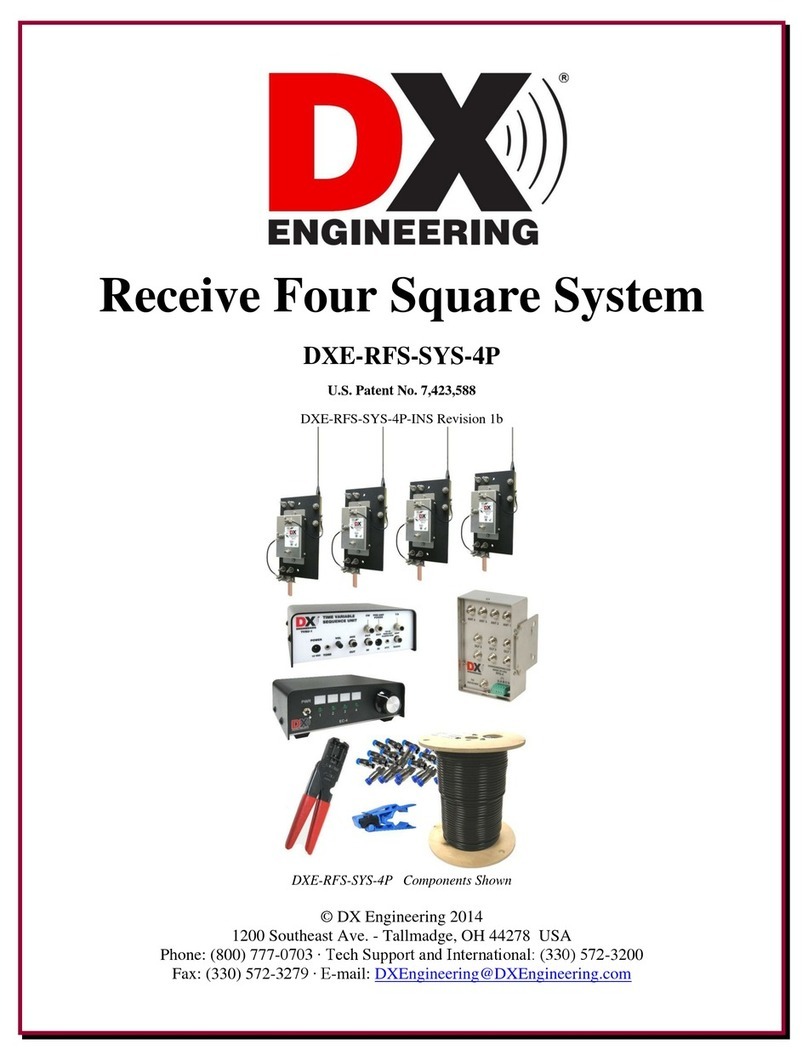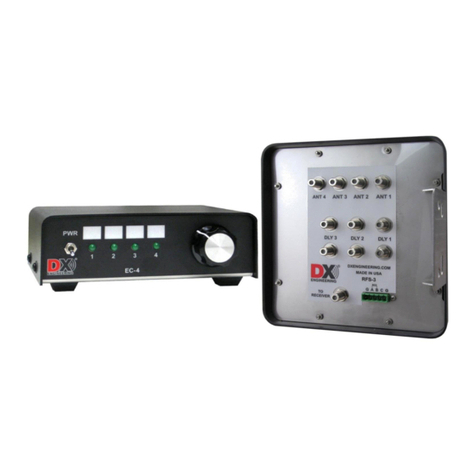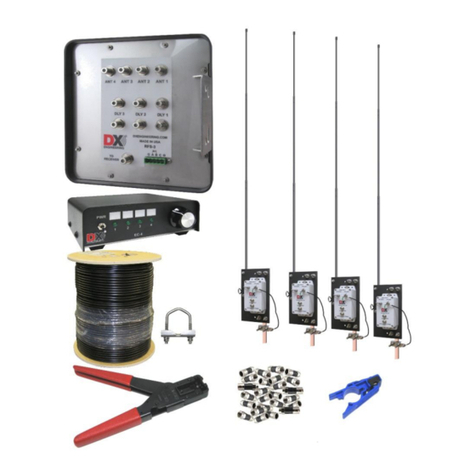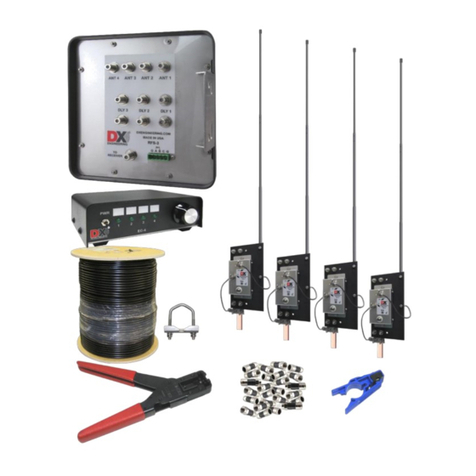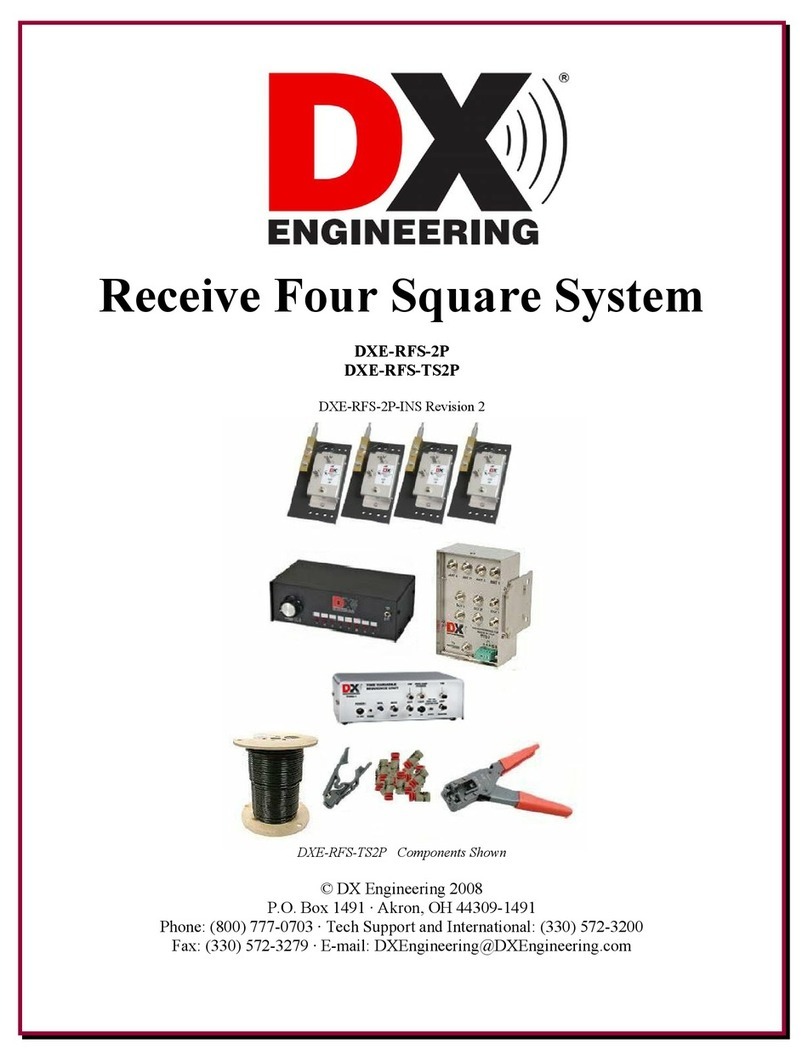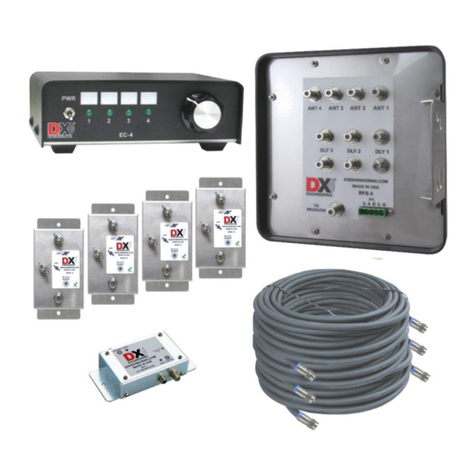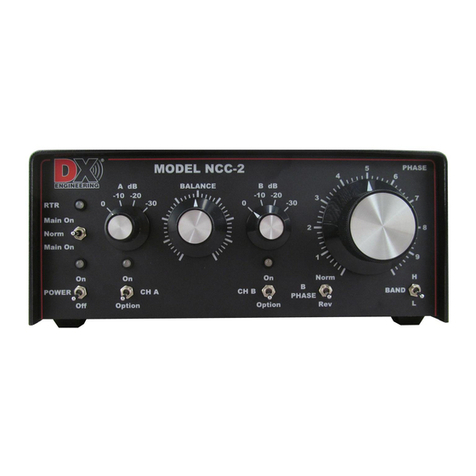
10
For example, transmitting legal-limit power output (1500 watts) into an ideal four square
transmitting antenna produces about 6,000 watts ERP (6 dB gain). Because of the increased radiated
power level, nearly 1/2 wavelength minimum spacing between the transmitting and receiving
antenna arrays is required.
Table 1 indicates minimum safe distances from transmitting antennas with 0 dB, 3 dB and
6 dB gain (ERP) using a 1500 watt transmitter. Your actual measurements may vary according to
location and proximity to various objects.
Band Unity (0 dB) Gain 3 dB Gain (2x) 6 dB Gain (4x)
160m (1.8 MHz) 55 ft 110 ft 220 ft
80m (3.5 MHz) 28 ft 56 ft 112 ft
40m (7.0 MHz) 15 ft 30 ft 60 ft
Table 1 - Array 1500w ERP Safety Distance
Topographical Considerations
Flat land is best. Erecting the receiving array on sloped land or steep hills may degrade
performance. To avoid pattern degradation, antenna elements must have reasonably similar
elevations. It's recommended the ground height difference between any element in the array be less
than 10% of the array diameter. For example, a 60 foot diameter array should be within six feet of
level. Every effort should be taken to make the elements symmetrical. Elements should all be
identical in construction and grounding, and should be mounted above any standing water or snow
line but as close to the ground as possible. In general, the system will not be affected by trees or
foliage as long as the foliage does not contact the element. Ideally, in important receiving
directions, there should be a clear electrical path for at least 1 wavelength. The site should allow a
ground system to be evenly distributed around the antenna, if one is required.
Site Selection in Relation to Noise Sources
Because the array is directional across its corners, use this example as a guide: If you have a noise
source and if your primary listening area is northeast, locate the array northeast of the dominant
noise source. This ensures the array is looking away from the source of noise when beaming in the
primary listening direction. The second-best location for the array is when the noise source is as far
as possible from either side of the array. If you look at patterns, the ideal location for the array is
one that places undesired noise in a deep null area.
If your location doesn’t have the usual noise sources (power lines, electric fences, etc.), locate the
array so that your transmitting antennas and buildings are off the back or side of the receiving array.
Noise that limits the ability to hear a weak signal on the lower bands is generally a mixture of local
ground wave and ionosphere propagated noise sources. Some installations suffer from a dominant
noise source located close to the antennas. Noise level differences between urban and rural locations
can be more than 30 dB during the daytime on 160 meters. Nighttime can bring a dramatic increase

